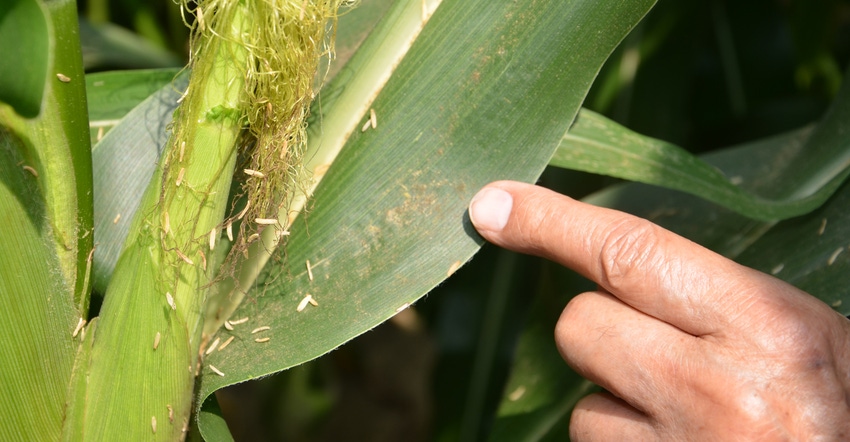April 24, 2018

After emergence, a young corn plant faces many hurdles as it transitions from baby to juvenile. Those hurdles include nutrient deficiencies, seedling diseases and insects, vagaries of Mother Nature, frost injury, and too much or too little water. It’s a wonder the puny little plant survives this range of possible traumas to become a healthy young adult. But what happens next is really something to watch!
By knee-high stage, the corn plant has already decided how many potential ear shoots it can develop. This decision depends a lot on hybrid maturity, plant density, weed pressure, water and nutrient availability, and other environmental factors such as temperature.
At waist-high, the corn plant decides how many kernel rows per ear it’s going to have. Even though this agronomic characteristic is mostly controlled by hybrid genetics, it’s influenced by the environment, plant spacing, water and nutrients.
In the meantime, the little tassel has been developing, though it’s still covered and protected by the leaves. Even though every leaf axil has a potential ear, there is only one tassel, so plants want to protect it as long as they can.
Ability to compensate
Last year in a Corn Watch project experiment, we demonstrated that if the top ear is somehow damaged or destroyed, the ear shoot in the next lower leaf axil will start developing into an ear. Soon you’ll see silks emerging from it. However, if that tassel is somehow destroyed, the plant — which is in a struggle for survival — must resort to the use of tillers or suckers, if available, or may even develop a tassel on top of the ear shoots to produce pollen. In nature the corn plant is trying to preserve its genetics and pass on its DNA to future generations.
The next stage is the process of pollination. Pollen shed occurs in the morning when it’s not hot. Pollen shed also doesn’t occur when it’s raining. Pollen grains must land on microscopic hairs on silks; then a pollen tube grows through the length of the silk to the ovule located on the cob and mates with the egg cell to start the development of the embryo. It has less than 24 hours to get this job done because the pollen will die after this.
Abundant pollen
Not to worry, because each tassel can produce from 2 million to 5 million pollen grains in three to five days. Silks keep getting longer until they’re pollinated and their eggs on the cob are fertilized. Cooler weather is more conducive to the pollination and fertilization process. We don’t want hot and dry weather during this critical stage or plants will start aborting tip kernels, which are the last ones to develop.
Danger looms during the pollination process. There are many silk-clipping insects, such as rootworm or Japanese beetles, that like to feed on silks. If you see a lot of silk-clipping going on, spraying an insecticide may be necessary. As we know well, weather during this critical stage can drastically affect corn yields. Let’s hope for the best for the crop this summer.
Nanda is president of Agronomic Crops Consultants LLC. Email [email protected], or call 317-910-9876.
About the Author(s)
You May Also Like






